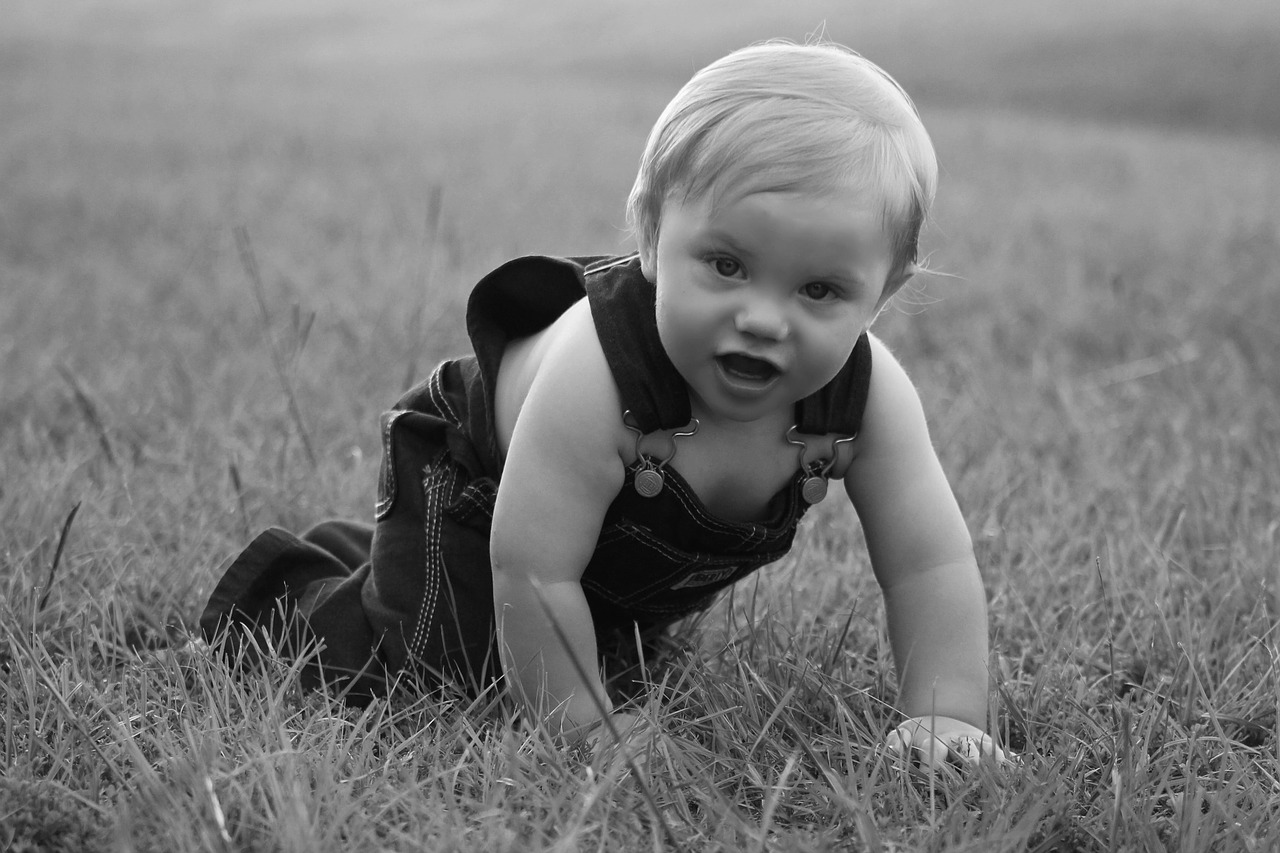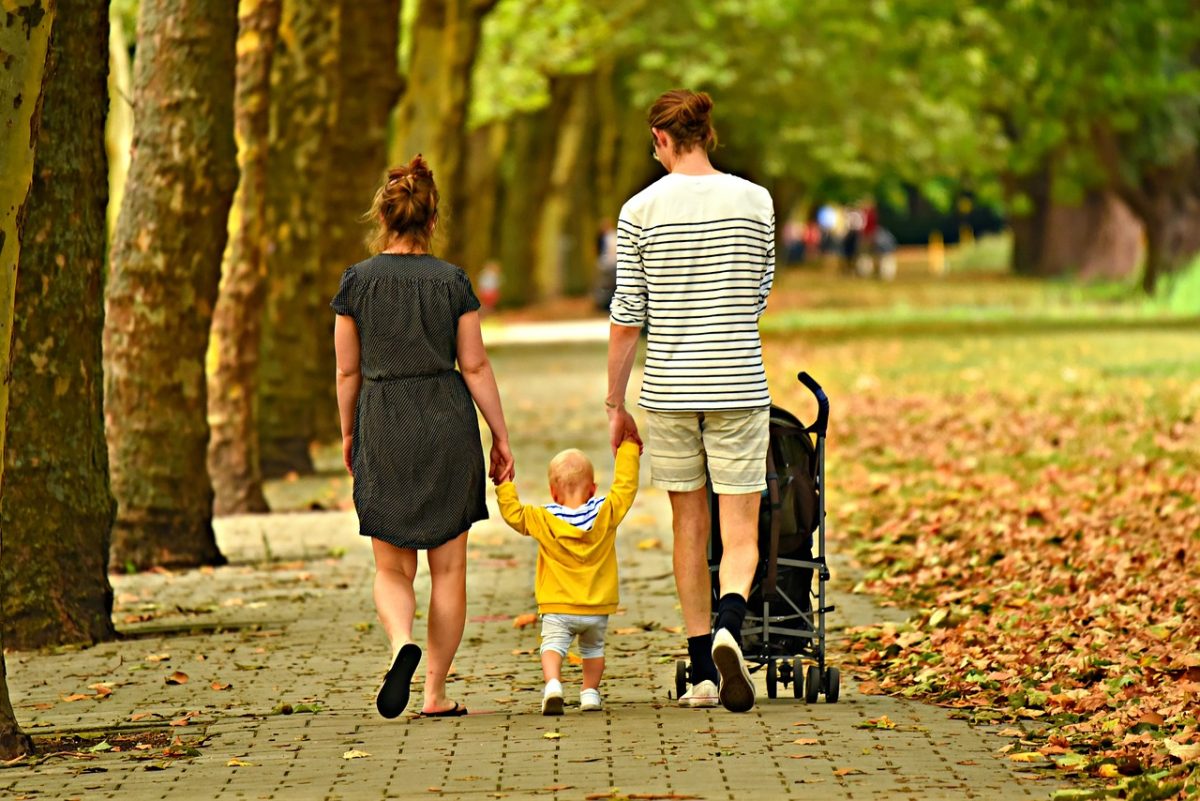So you may be wondering when can babies start walking? If your baby is on the verge of becoming a toddler, you may begin to wonder about their walking stage. For those that wonder when will babies walk, then you’re in the right place. We’ll go over the average age that babies will begin walking, how to help them walk on their own, and signs that signify they will be able to walk soon.
Seeing your baby finally gets up and can be extremely exciting for you. It’s one of the most thrilling milestones of a baby’s development, and you may be eagerly pondering when are babies supposed to walk? It can feel like a miracle when they finally take their first steps. Sometimes we may even try to over complicate the process of walking. As babies, they need to gain strength in their leg muscles to carry their body weight to walk. Also, walking requires proper balance in their core, hips, and ankles. Some babies will be able to pick this up quickly and walk, while others may take longer to develop.
So what’s the earliest a baby can walk? Babies can usually walk as early as about six months old, but it will typically take roughly nine to 18 months before most babies will walk. We will begin to go over more details about when babies start walking, the signs a baby will walk shortly, and how to encourage babies to begin walking.
What age should a baby start walking
Age can vary a lot, and typically, a baby will walk around the one to two-year mark. The walking milestone won’t happen instantly. Usually, this takes time. A baby will need to progress through many milestones before taking their first steps in the world. The process begins when you begin practicing tummy time, which allows them to better control their neck and head. Tummy time will teach your baby how to roll up and sit up for themselves. Knowing what age should a baby start walking is crucial for your understanding of their developmental stage. For instance, a baby will begin crawling around seven months and then pull their little bodies up around nine months to 12 months. From there, they begin cruising.
Cruising is a big sign that a baby will begin walking very soon. This is when a baby will begin to test the waters by standing upright. They may take a few steps cautiously to make sure everything is okay. You may hold something for support, such as a coffee table or couch. Make sure your furniture is baby proof so that nothing is dangerous when they do begin to walk. From there, your baby will quickly begin walking on their own. It may take every baby a different timeline. Some may take a few weeks to master this newfound skill, but others may pick it up immediately. You may find that some babies may never even begin crawling while many others will crawl for a bit and then cruise. And others may crawl for months before having the courage to cruise.
Once a baby begins to cruise, then you should quickly notice if they begin to walk. Personality can play a significant role. Babies with a little more courage might step up to the challenge and start doing it much sooner.
How to Encourage Your Baby to Walk

Luckily you don’t need much special equipment to help your baby build key skill sets to help your baby walk. You just need to help them with their tummy time. From there, you just build on top of that skill with another one. Babies usually start with tummy time to help them go from rolling to sitting. From there, they can begin crawling and pull-up to a standing position. We will list out a few strategies to help your baby walk:
Carry Them Less – Cuddling and carrying your baby can be super cute, but if you do it too often, you are only delaying their time needed to learn walking. Babies won’t need to move if you constantly carry them. First, you will need to let them explore and give them the time necessary to develop the skills on their own. From there, they will be more interested in learning that new milestone to walk.
Don’t use a baby walker – Using a baby walker may be convenient but will slow the overall progression of teaching a baby to walk. Walkers will keep your child seated, so their hips are flexed, and their lower legs will move the walker. However, this isn’t a natural position to walk and won’t progress them forward. Walkers are also very dangerous, especially on stairs, so many pediatricians advise against baby walkers.
Use the activity saucer and playpen less – The problem with having your baby in a playpen or activity saucer is that they are not the best with developing your babies movement skills. Typically this causes your baby to be confined in one area and not have the space to move, crawl, stretch, stand up or roll. This can lead to babies getting walkers in an attempt to get them to walk. It’s best to have babies in an open floor space without the sharp corners and anything that may cause falling.
Use a push toy – Push toys can be an excellent tool to help your baby walk forward. This is useful when your baby is finally standing upright and cruising around the furniture. Some push toys may have wheels that move slowly, which helps your child to learn how to walk. You may not need an exact push toy. It can be as simple as having your baby just push a diaper box in the house. This is a much cheaper option than a plush toy.
Have babies go barefoot – It’s best to have babies learn to walk in barefoot before shoes. Although shoes look super cute on babies, they aren’t ideal for teaching them how to walk. Letting babies use their barefoot allows them to balance using their toes. You may even see toe walking in children. Ideally, once they can walk, you should get shoes that have light soles and are very flexible. This helps to enable their bones and muscles to develop and avoids potential tripping.
When do babies usually start walking on their own?
Here’s a better way of understanding how your baby should start walking. When a baby finally begins walking, it may take several weeks to get comfortable with it before their striding along. From there, they can begin usually running about six months later.
Then you may be thinking about when can babies move along stairs? Walking upstairs can be much more challenging, especially for babies who just learned how to walk. Once your baby can walk steadily and consistently, then you may introduce the stairs. First, you should do so by holding on to the rail and your hand. Make sure to give them lots of practice. By the age of two years old, they should be able to walk up and downstairs.
Delayed Walkers
Some parents begin worrying if their babies can’t walk by their first birthday. And a greater concern happens if they can’t walk by the 18-month mark. However, some babies are late walkers. This usually happens due to their baby personality. It’s more worrisome to see a baby have regression than any delayed progression. If the baby isn’t making attempts to move forward or regress in walking behavior, this can be a big red flag. For instance, if a baby isn’t even trying to crawl or pull-up is a potential red flag that should be addressed. But a baby is pulling up and trying to cruise, but can’t walk. Then it’s only a matter of time before the baby does begin to walk. Both babies may have a lack of motor skills, but the latter will catch on shortly.
If you notice any long delays in walking, then you should contact your pediatrician or healthcare provider. Of course you should know what age should a baby start walking first before doing so. Do note that some babies may just be late bloomers and will take a bit longer. We sometimes are so stuck on when do babies walk on average that we forget it can vary. As long as your baby starts to trend in a positive trajectory, they will likely hit their stride sooner or later. You will look back on the times you asked yourself, when will baby walk, as a fond time. Sooner or later, you’ll begin chasing them around all-time once they get the hang of it.

